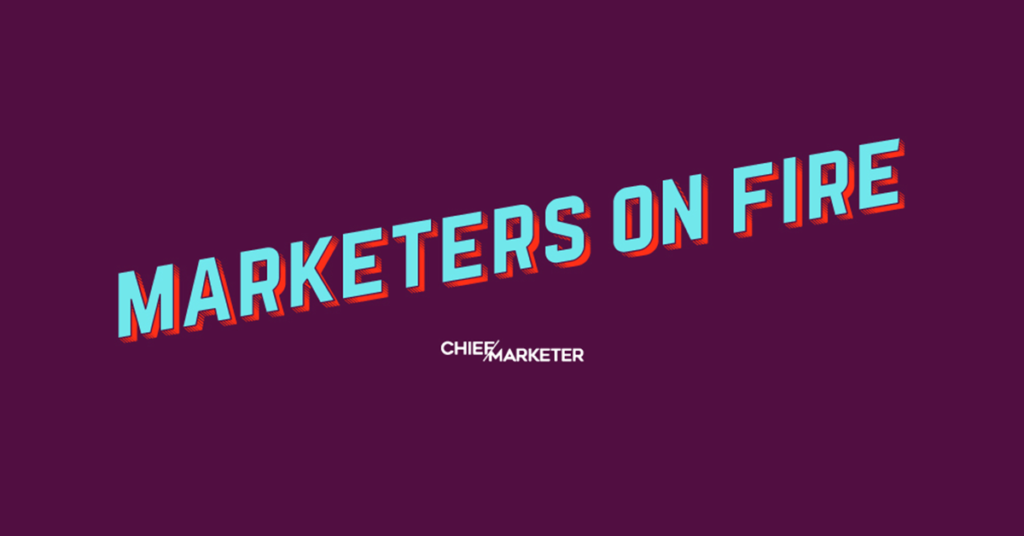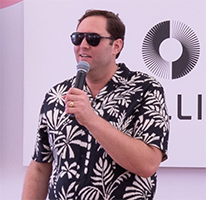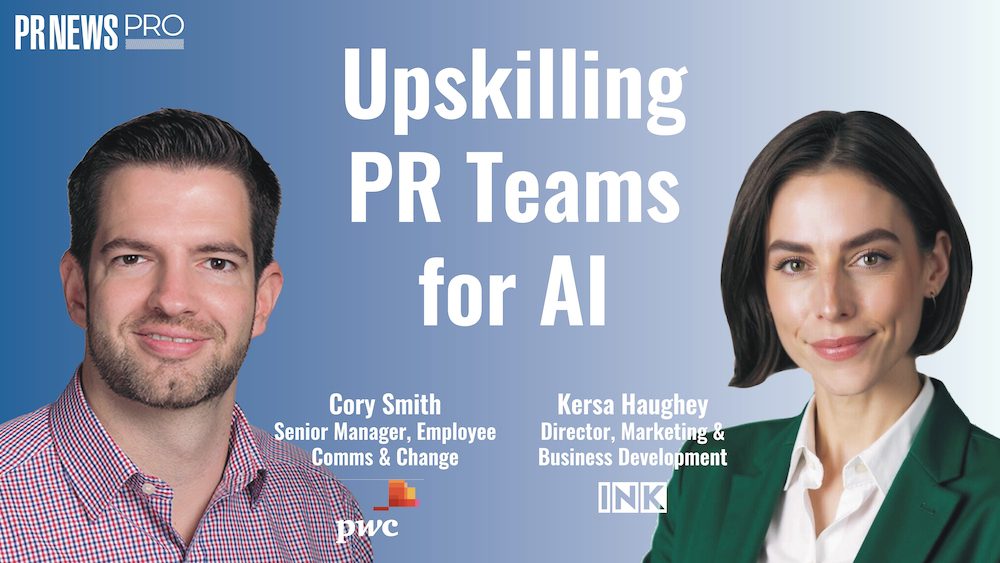Our monthly profile of an outstanding marketer whose leadership and campaigns are moving the needle for their brand.
—
Being CMO of IBM’s Weather Channel technology, website and app is a weighty job in and of itself. But as CMO of Watson Advertising and Weather; Developer Marketing at IBM, Randi Stipes also oversees marketing for its B2B AI ad solutions division and its global developer incubator, which grants access to IBM technology to developers worldwide who are building open-source solutions that address societal issues.
“I feel like I have the best job at IBM in that it does feel at face value like a disparate portfolio, with very different customers, very different audiences,” Stipes says. “What transcends all these businesses is being able to provide consumers, brands and developers access to technology and expertise that is going to help them make better decisions.”
Consumers and businesses have certainly needed to make myriad unprecedented decisions during the past 18 months. “When I reflect on the past year there’s been this confluence of crises,” Stipes says. “I think about the opportunity these moments of crises have provided, and I think about how we can lead not only to get through it but to create growth and purpose and meaning.”

The COVID Crisis
Arguably the most dominant crisis has been the COVID-19 pandemic. The Weather Channel took advantage of its huge reach—more than 400 million users across 2.5 billion devices—to create a COVID-19 tracker and news resource on weather.com. It took the data and tech teams just five days, Stipes says with pride. “We used AI and advanced data analytics that pulls in data from local and state governments, the CDC, the World Health Organization, so that people could see what was happening in their own backyards.” She is quick to give credit to her employees for this initiative: “It was the spirit of the team recognizing we have the tools and wanting to provide this public service.”
The pandemic also led Stipes and her team to quickly pivot on another initiative, its 2020 Call for Code. Launched in 2018 in partnership with the U.N. Human Rights Council and the Linux Foundation, Call for Code, according to Stipes, answers the question, “How can we arm developers with technology so that they can help solve some of the world’s, of society’s, greatest challenges?” To date, more than 400,000 developers and data scientists from 179 countries have participated, creating more than 15,000 apps.
A sort of altruistic hackathon, Call for Code is given a theme each year. Just weeks after climate change was announced as the 2020 theme, much of the world went into lockdown. That led Stipes and IBM to expand the focus to address COVID-19 as well. They weren’t expecting developers to come up with a vaccine, she hastens to explain, but rather “how technology can address community cooperation and remote education.”
The global developer community rallied around the new theme; participation in the 2020 Call for Code was six times that of the previous year. Among the solutions tested and deployed with the support of IBM and partners were Safe Queue, an app that simplifies social distancing for those waiting in line at a store or a restaurant, and Are You Well?, an app that helps medical professionals triage those with COVID-19 symptoms.
The Racial Injustice Crisis
Call for Code pivoted once again just a few months later. Responding to the murders of George Floyd, Ahmaud Arbery, Breonna Taylor and other POC, IBM launched Call for Code for Racial Justice. “Employees were really the catalyst,” Stipes says of the initiative, which aims to combat systemic racism by focusing on police and judicial reform and accountability, diverse representation, and policy and legislation reform.
While Call for Code functions as a competition among developers, “we did not think it was appropriate to position this as a challenge,” Stipes says. “We didn’t want people competing against each other; there’s enough divisiveness as it is.” IBM has already deployed and is making available to other users one of the Call for Code for Racial Justice solutions: TakeTwo, an API that flags racially biased words and phrases in text.
Building upon the Call for Code model, in June 2020 Stipes launched Call for Creative under the Watson Advertising umbrella. This gives brands the opportunity to use the Watson Advertising Accelerator tool—which relies on AI to help improve the effectiveness of marketing creative—to create public-service campaigns.
“I’m most proud of the recent work we’ve done with the Ad Council,” Stipes says. “First, they ran a campaign last year, Love Has No Labels, promoting exclusivity and diversity. They used the Accelerator technology and had such strong results, they used it again for their [COVID-19] vaccination education campaign, making sure we’re reaching the right audiences in the right way for audiences who have historically been resistant to vaccinations.”
The Advertising Crisis
Stipes cites the Accelerator as one way that Watson Advertising is addressing the decreasing ability to use cookies and other identifiers to boost the effectiveness of ad and marketing campaigns. “We made a decision very early, in the midst of the pandemic and the industry undergoing all this transition, to take a leadership position,” she says. That includes building a suite of AI solutions that do not rely on identifiers. In addition to the Accelerator, these include IBM Watson Advertising Predictive Audiences and Advertising Attribution.
Stipes says she tests all Watson Advertising technology at the Weather Channel before bringing it to market. In fact, the Accelerator helped with marketing the Weather Channel’s subscription app, both of which launched in early 2020. “I used Accelerator technology to help me understand the type of messages, the calls to action, the creative, that would work the best. That is one contributing factor to why we’re likely to hit one million subscribers this quarter.”
There’s no doubt that the recent crises have taken a huge toll on individuals and industries. But there’s a silver lining: “[the past 18 months] forced everyone to lean into a new way of thinking and a new way of doing things,” Stipes says. “It’s an extraordinary time to be a marketer. My optimism is greater than my anxiety right now.”



 Network
Network

